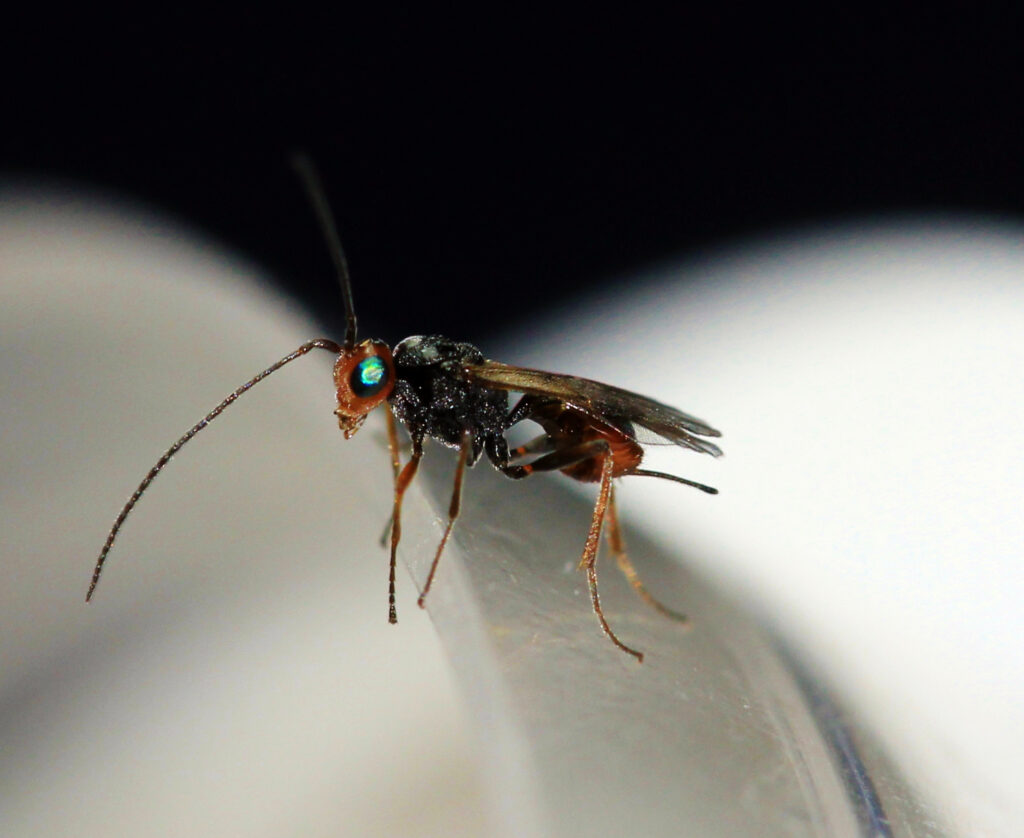In the seemingly peaceful world of gardens and meadows, a sinister drama unfolds that rivals the most chilling horror movie. Hidden from human eyes, a microscopic puppet master orchestrates one of nature’s most disturbing acts of mind control. The innocent ladybug, beloved by gardeners and children alike, becomes an unwitting victim in this biological nightmare. What emerges is a tale so bizarre and unsettling that it challenges our understanding of free will in the animal kingdom.
The Tiny Terror Behind the Mind Control
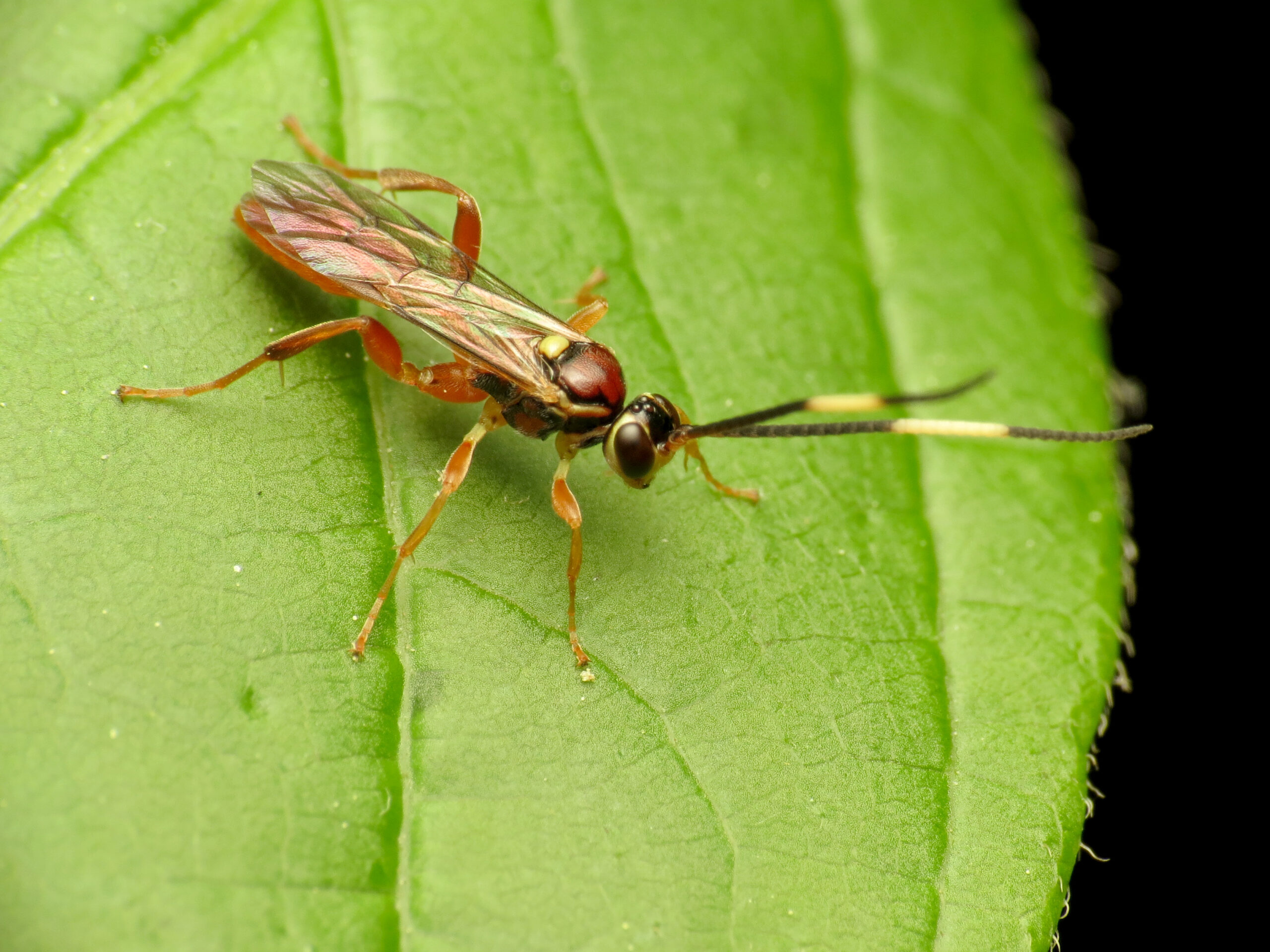
Meet Dinocampus coccinellae, a parasitic wasp so small it could easily be mistaken for a speck of dust. This minuscule creature, measuring barely 3-4 millimeters in length, possesses the terrifying ability to hijack the nervous system of ladybugs. Unlike the familiar yellow and black wasps that buzz around picnic tables, this species belongs to a group known as braconid wasps.
These wasps have evolved over millions of years to become the ultimate biological hackers. Their sleek, dark bodies house sophisticated chemical weapons that can turn a predator into a protector. The female wasp carries within her abdomen not just eggs, but also a cocktail of mind-altering compounds that would make any pharmaceutical company envious.
The Sinister Injection Process
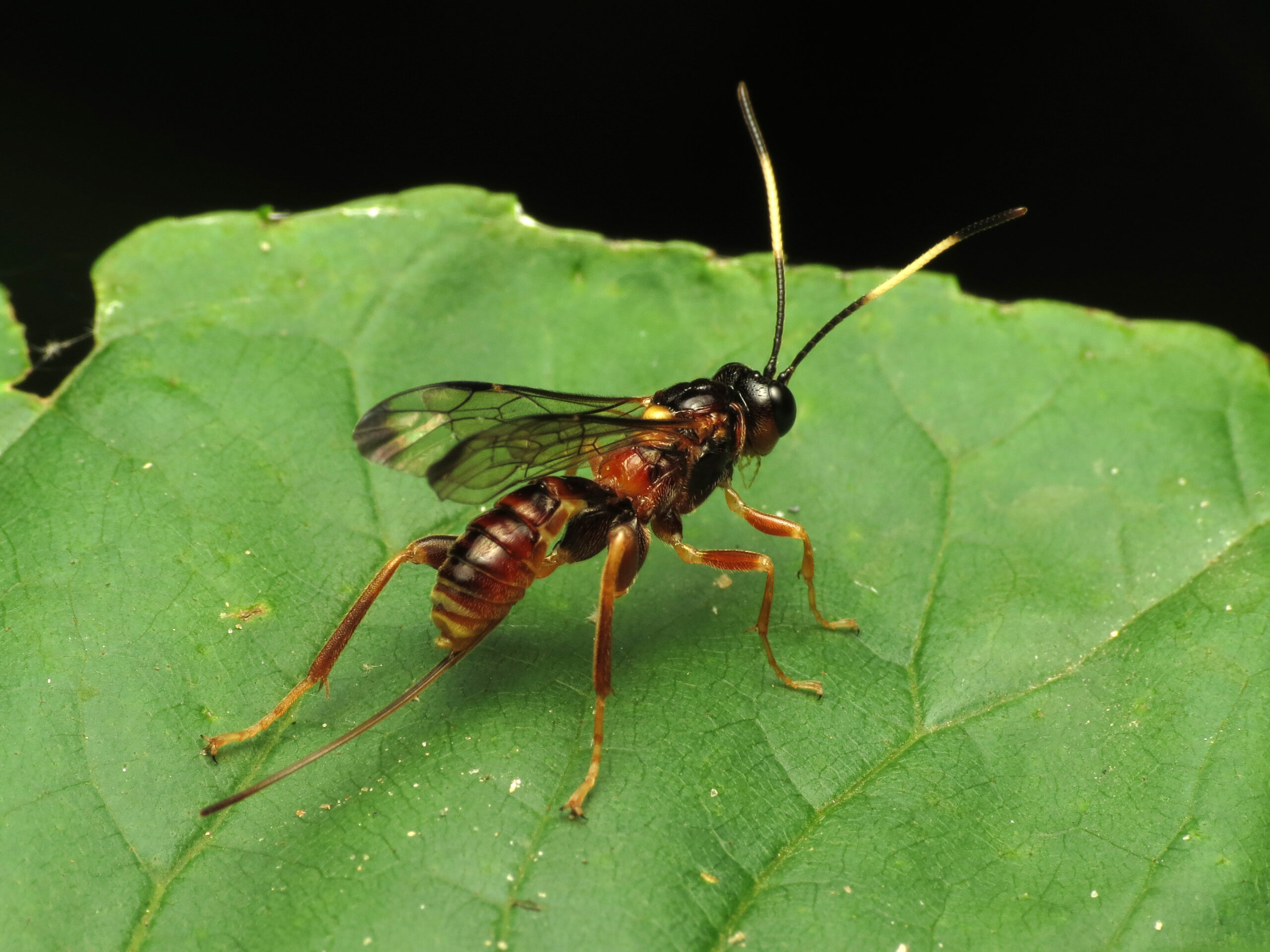
The attack begins with surgical precision that would impress any medical professional. The female wasp approaches an unsuspecting ladybug, often while it’s busy hunting aphids or minding its own business. With lightning speed, she positions herself beneath the ladybug and strikes with her needle-like ovipositor.
This isn’t just egg-laying – it’s biological warfare at its most sophisticated. The wasp injects a single egg directly into the ladybug’s body cavity, along with a complex mixture of viruses and chemicals. The entire process takes mere seconds, and the ladybug often continues its activities completely unaware that its fate has been sealed.
What makes this injection particularly sinister is the precision required. The wasp must penetrate the ladybug’s tough exoskeleton without damaging vital organs, all while avoiding the ladybug’s defensive reflexes.
Inside the Living Incubator
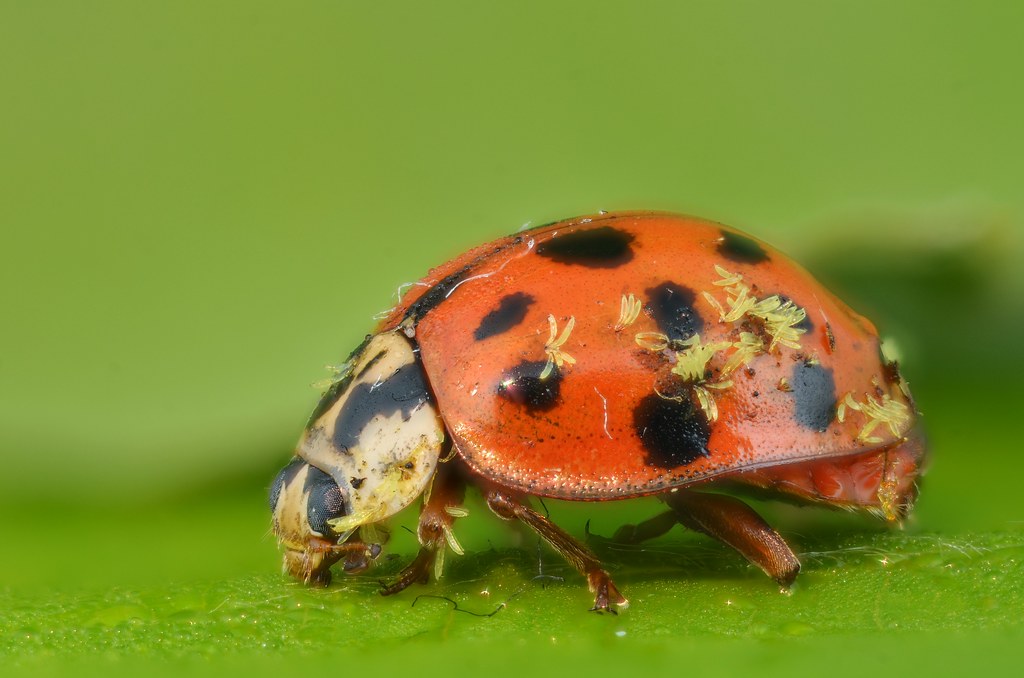
Once inside the ladybug’s body, the wasp egg begins its grotesque development. The ladybug continues its normal activities for about 20 days, hunting, feeding, and moving around while completely oblivious to the alien life form growing within its abdomen. This extended incubation period serves a crucial purpose – it allows the wasp larva to develop while keeping its host healthy and mobile.
During this time, the wasp larva feeds on the ladybug’s body fluids and internal tissues, but in a carefully controlled manner. Like a skilled surgeon, it avoids damaging essential organs that would kill its host prematurely. The ladybug essentially becomes a living, breathing nursery, providing everything the developing wasp needs to grow and thrive.
The larva’s feeding strategy is remarkably sophisticated, targeting non-essential tissues first and leaving vital organs for last. This ensures the ladybug remains alive and functional throughout the parasitic relationship.
The Viral Accomplice
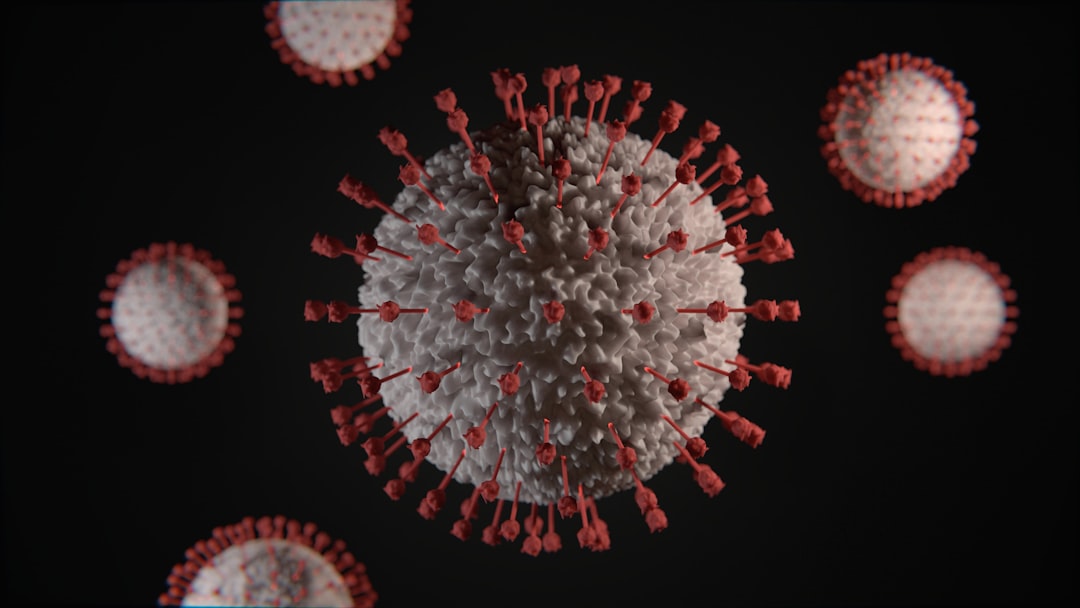
The wasp doesn’t work alone in this horrific scheme. Scientists have discovered that the female wasp also injects a virus called DcPV (Dinocampus coccinellae Paralysis Virus) along with her egg. This virus serves as a biological accomplice, weakening the ladybug’s immune system and preparing it for the mind control that will follow.
The virus spreads throughout the ladybug’s body, infiltrating its nervous system and brain tissue. Research suggests that this viral infection may be responsible for the dramatic behavioral changes that occur later in the process. The virus essentially rewires the ladybug’s brain, preparing it to become a willing slave to its parasite.
What’s particularly disturbing is that the virus appears to be perfectly adapted to work in conjunction with the wasp’s other chemical weapons. This suggests a long evolutionary partnership between the wasp and its viral accomplice.
The Gruesome Emergence
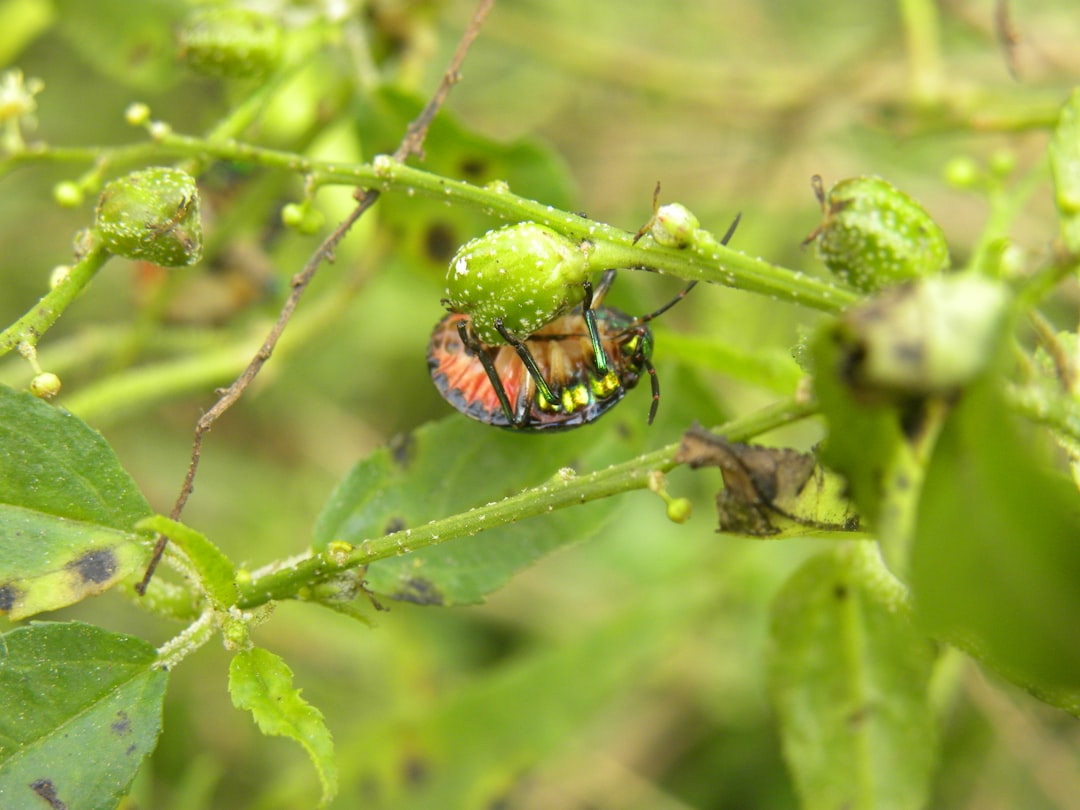
After approximately three weeks of internal development, the wasp larva is ready to emerge. In a scene that would make even the most hardened horror movie director cringe, the fully-grown larva chews its way out of the ladybug’s abdomen. The ladybug, despite this traumatic experience, somehow survives the emergence of its unwanted passenger.
The newly emerged wasp larva immediately begins spinning a silk cocoon beneath the ladybug’s body. This cocoon will serve as its protective chamber during the vulnerable pupation stage. What happens next, however, is where this biological horror story takes its most disturbing turn.
The ladybug, instead of fleeing or attempting to remove the parasite, remains motionless above the cocoon. It has become a living umbrella, protecting the very creature that has just violated its body in the most intimate way possible.
The Zombie Transformation
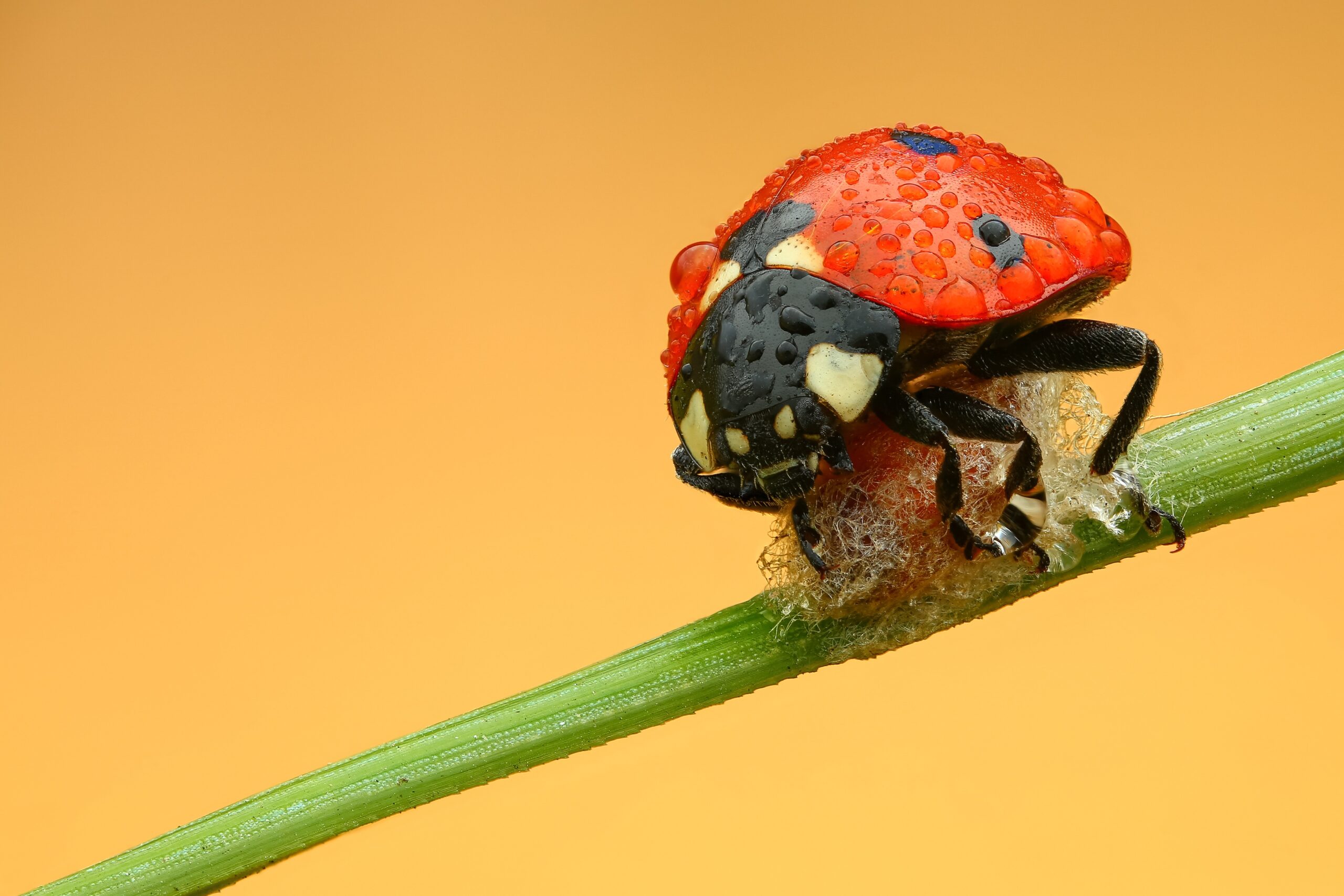
The moment the wasp larva emerges and begins cocoon construction, the ladybug undergoes a dramatic behavioral transformation that defies natural logic. The once-active predator becomes completely paralyzed, frozen in place like a living statue. Its legs lock into position, gripping whatever surface it’s on with mechanical precision.
This isn’t death – it’s something far more unsettling. The ladybug’s eyes remain active, its antennae occasionally twitch, and it continues to breathe. Yet it has lost all ability to move or respond to external stimuli. Scientists describe this state as “behavioral manipulation” or “zombie-like behavior,” but these clinical terms hardly capture the horror of what’s actually happening.
The transformation is so complete that the ladybug will remain in this catatonic state for days or even weeks. It becomes a living shield, protecting the developing wasp from predators, weather, and other environmental threats.
The Science Behind the Mind Control
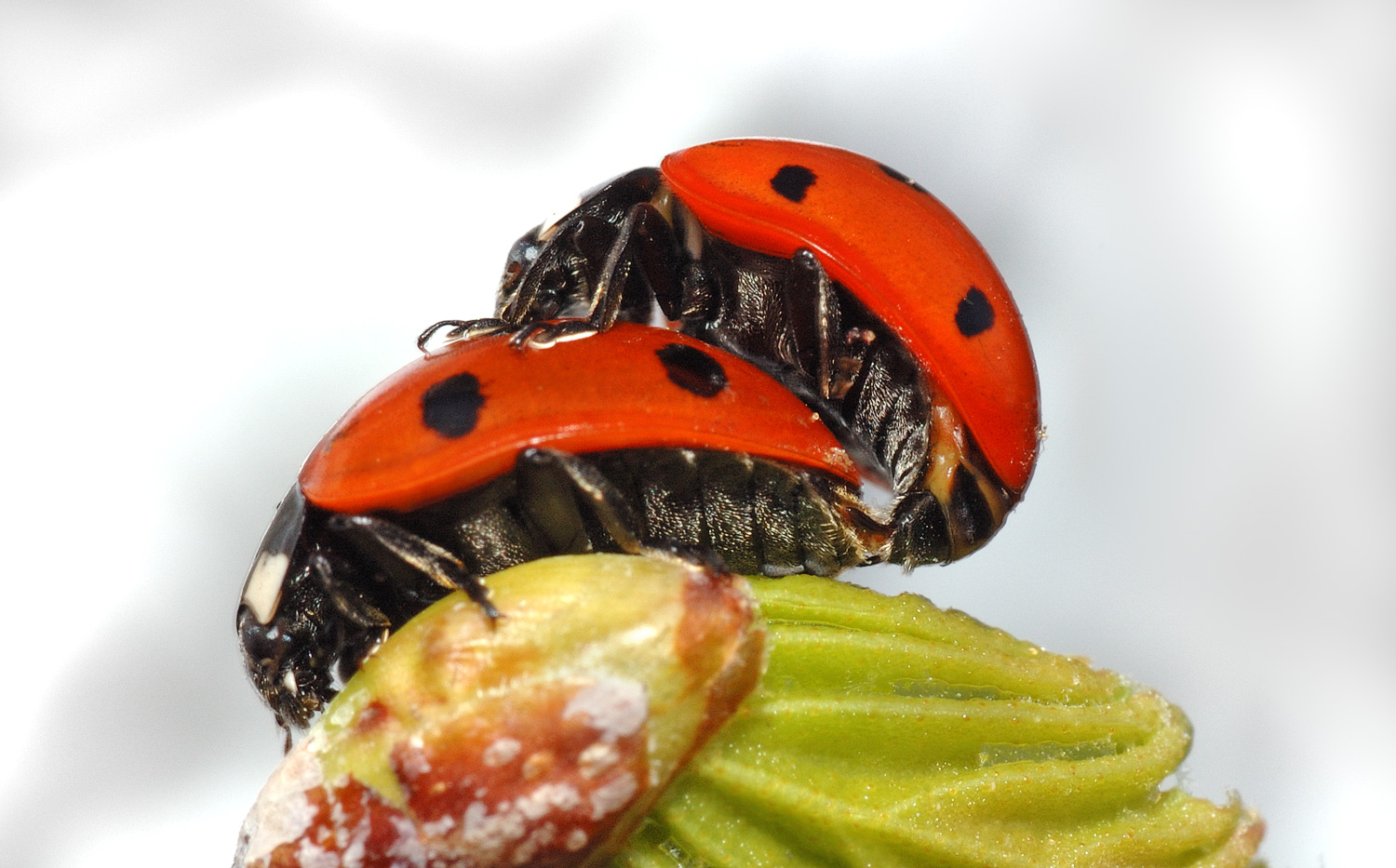
Researchers have spent years trying to understand exactly how the wasp achieves this remarkable feat of biological mind control. The secret appears to lie in a combination of the virus injection and specific neurotoxins that target the ladybug’s central nervous system. These compounds essentially hijack the ladybug’s motor functions while leaving its basic life support systems intact.
The virus spreads to the ladybug’s brain, where it causes inflammation and disrupts normal neural pathways. Meanwhile, the wasp’s chemical cocktail interferes with neurotransmitter production, effectively cutting the connection between the brain and the body. It’s like severing the puppet strings while keeping the puppet alive.
What makes this mind control so effective is its precision. The wasp’s compounds target specific neural circuits responsible for movement and behavior while leaving autonomic functions like breathing and heartbeat untouched. This surgical approach to brain hacking represents millions of years of evolutionary refinement.
The Perfect Bodyguard
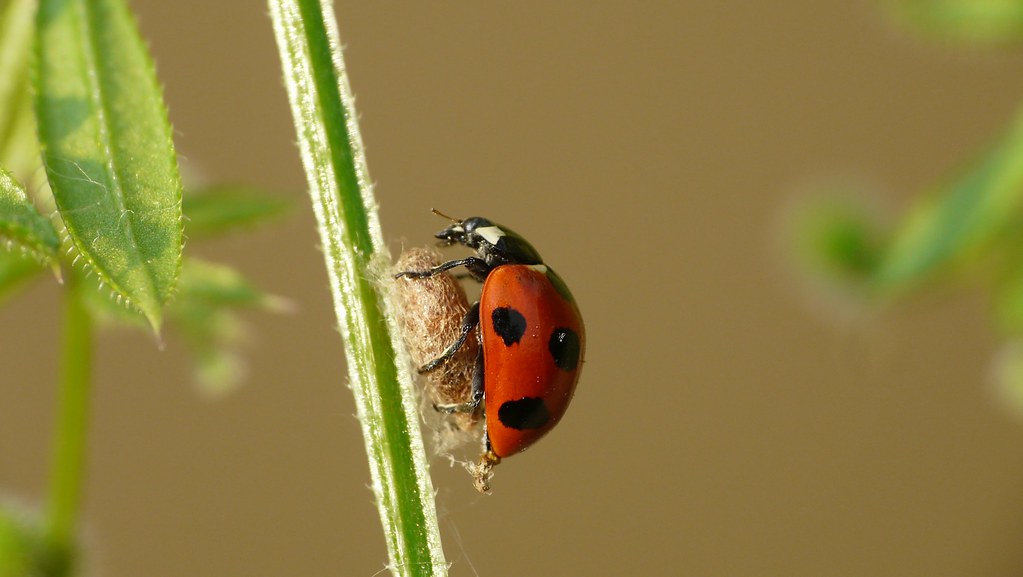
While trapped in its zombie-like state, the ladybug becomes an incredibly effective bodyguard for the developing wasp. Its colorful spotted shell serves as a warning to potential predators, while its presence deters parasitic wasps that might otherwise attack the vulnerable cocoon beneath it. The ladybug’s defensive chemicals also provide an additional layer of protection.
Studies have shown that wasp pupae protected by zombie ladybugs have significantly higher survival rates than those exposed to the environment. The ladybug’s body provides shelter from rain, wind, and temperature fluctuations. Its mere presence creates a microenvironment that’s perfectly suited for wasp development.
The bodyguard relationship is so effective that some researchers consider it one of the most sophisticated examples of behavioral manipulation in the animal kingdom. The wasp has essentially created a living fortress that provides 24/7 protection for its offspring.
The Aftermath: Life After Zombification

Perhaps the most surprising aspect of this entire horrific process is what happens after the adult wasp emerges from its cocoon. In many cases, the ladybug gradually recovers from its zombie state, regaining the ability to move and behave normally. This recovery suggests that the mind control compounds are temporary rather than permanently damaging.
However, the ladybug’s ordeal leaves lasting scars. Many never fully recover their original vigor and agility. Some die shortly after the wasp’s emergence, succumbing to the physical and neurological trauma they’ve endured. Others live on but remain sluggish and less effective as predators.
The fact that some ladybugs survive this experience at all is remarkable. It suggests that the wasp’s control mechanisms are calibrated to keep the host alive just long enough to complete the parasitic cycle, with survival beyond that point being largely irrelevant to the wasp’s reproductive success.
Global Distribution and Impact

This nightmarish scenario isn’t confined to a single location or ecosystem. Dinocampus coccinellae has established populations across North America, Europe, and parts of Asia. Wherever ladybugs exist, these parasitic wasps often follow, creating a hidden network of biological horror that spans continents.
The wasp’s global distribution has significant implications for ladybug populations worldwide. In some regions, parasitization rates can reach 50% or higher during peak seasons. This means that half of all ladybugs in affected areas may be carrying these internal passengers, fundamentally altering the dynamics of local ecosystems.
Climate change and global trade have facilitated the spread of these parasites to new regions. As temperatures rise and shipping routes expand, both the wasps and their preferred hosts are establishing populations in previously uninhabited areas, spreading this biological nightmare to new corners of the world.
Evolutionary Arms Race
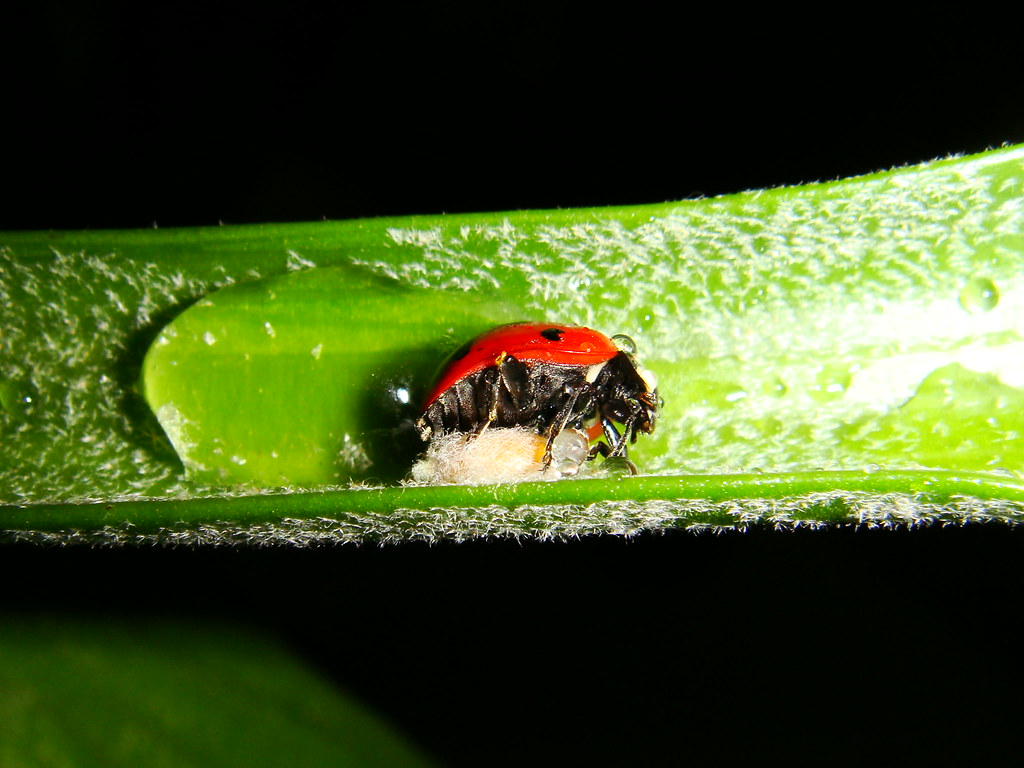
The relationship between these parasitic wasps and their ladybug hosts represents millions of years of evolutionary warfare. As the wasps developed more sophisticated methods of manipulation, ladybugs evolved countermeasures to resist parasitization. This ongoing arms race has shaped both species in profound ways.
Some ladybug species have developed behavioral adaptations that make them less susceptible to wasp attacks. These include enhanced vigilance, faster escape responses, and even the ability to detect and avoid areas with high wasp populations. However, the wasps continue to evolve as well, developing new strategies to overcome these defenses.
The evolutionary pressure created by this parasitic relationship has also influenced the development of ladybug immune systems. Those individuals with stronger immune responses are more likely to survive parasitization and pass on their genes, gradually increasing the population’s resistance over time.
Implications for Biological Control

The discovery of these parasitic wasps has complicated efforts to use ladybugs for biological pest control. Gardeners and farmers have long relied on ladybugs to control aphid populations naturally, but the presence of these mind-controlling parasites can significantly reduce the effectiveness of ladybug populations.
Agricultural researchers are now grappling with the challenge of maintaining healthy ladybug populations while managing the threat posed by parasitic wasps. Some are exploring the possibility of breeding parasite-resistant ladybug strains, while others are investigating biological controls for the wasps themselves.
The situation has also raised ethical questions about the use of biological control agents. If we’re introducing ladybugs to control pests, are we also obligated to protect them from their own parasites? This dilemma highlights the complex interconnections within natural ecosystems and the unintended consequences of human intervention.
Research Breakthroughs and Future Studies

Recent advances in neuroscience and molecular biology have opened new avenues for understanding this parasitic relationship. Scientists are now able to study the precise mechanisms of mind control at the cellular level, revealing details that were previously impossible to observe.
Current research focuses on identifying the specific compounds responsible for behavioral manipulation and understanding how they interact with the ladybug’s nervous system. This knowledge could potentially lead to new treatments for neurological disorders in humans, as the wasp’s methods of neural manipulation are remarkably precise and effective.
Future studies may also explore the potential for using these natural mind-control mechanisms in beneficial applications. The wasp’s ability to temporarily disable motor functions without causing permanent damage could inspire new approaches to treating conditions like Parkinson’s disease or epilepsy.
The Broader Context of Parasitic Manipulation
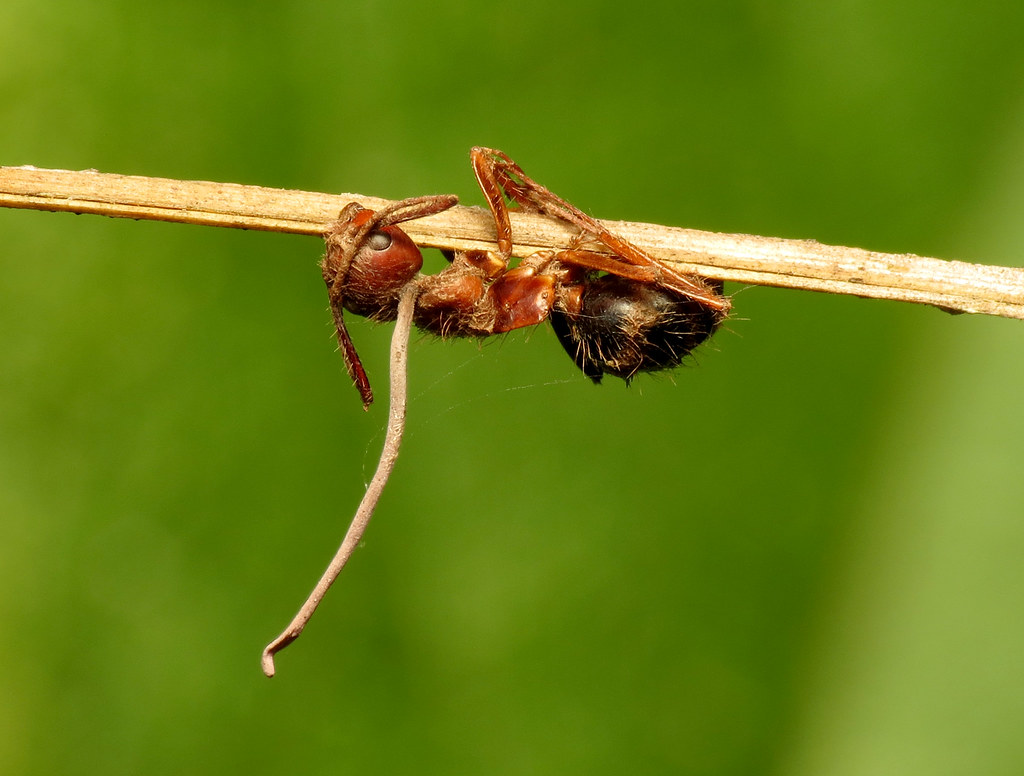
The ladybug-wasp relationship is just one example of a much broader phenomenon in nature. Parasites that manipulate their hosts’ behavior are found across many different species and ecosystems. From fungi that control ant behavior to worms that influence fish swimming patterns, biological mind control is far more common than most people realize.
What makes the ladybug case particularly striking is the dramatic nature of the behavioral change and the sophisticated mechanisms involved. The wasp’s ability to transform a active predator into a motionless bodyguard represents one of the most extreme examples of parasitic manipulation documented in insects.
Understanding these relationships helps scientists appreciate the complex ways that different species interact and evolve together. It also challenges our assumptions about free will and autonomy in the animal kingdom, revealing that even simple behaviors can be subject to external control.
Conclusion

The story of the parasitic wasp that turns ladybugs into zombie babysitters reveals one of nature’s most disturbing and sophisticated survival strategies. This microscopic puppet master has evolved the ability to hijack another creature’s nervous system with surgical precision, creating a living fortress that protects its developing offspring.
From the initial injection of eggs and viruses to the final emergence of the adult wasp, every step of this process demonstrates the incredible complexity of evolutionary adaptation. The wasp’s ability to maintain its host’s life while completely controlling its behavior represents a level of biological manipulation that borders on science fiction.
As we continue to study these remarkable creatures, we gain deeper insights into the hidden dramas playing out in ecosystems around the world. The next time you see a ladybug in your garden, remember that it might be harboring one of nature’s most sophisticated parasites – a tiny terror capable of turning predators into protectors through the power of biological mind control.
What other hidden horrors might be lurking in the seemingly peaceful world of insects around us?

